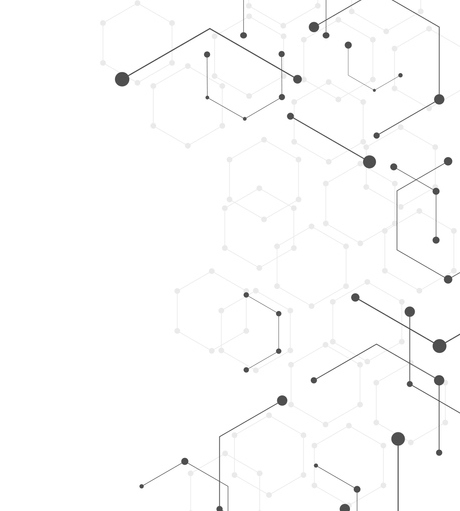Editor’s note: Barry Jennings is director, cloud and commercial business planning insights, Microsoft Insights, Redmond, Wash.
 In the commercial space, changes in technology and decision-making around acquiring new technologies are made at an impossibly fast pace. Reliance on technology has increased due to the current COVID-19 pandemic. In order to stay ahead of the game and bring new products to market, brands must understand their B2B customers as well as the decision makers within those companies. This is especially true for products that are “new to the world.”
In the commercial space, changes in technology and decision-making around acquiring new technologies are made at an impossibly fast pace. Reliance on technology has increased due to the current COVID-19 pandemic. In order to stay ahead of the game and bring new products to market, brands must understand their B2B customers as well as the decision makers within those companies. This is especially true for products that are “new to the world.”
Several significant shifts have occurred within the B2B-focused technology space in the last two decades, with a significant and corresponding evolution of marketing research and insight generation. While software innovation has made executing complicated designs much easier, the decision-making process has grown more complicated and nuanced, with multiple stakeholders.
The availability of different types of data, ranging from social media to behavioral data, has also grown significantly, which adds depth and breadth of inputs that help address business questions. And with this, a new challenge is created – separating signal from noise.
Marketing new to the world products with research and insights
In 2019, more money was spent by commercial enterprises on software and cloud services than any other technology, products or services, with total spend in the U.S. alone at over $4 trillion. Digital technologies businesses are evolving quickly to better interact with, serve and support their customers. And with the onset of the COVID-19 pandemic in 2020, companies across all categories had to quickly drive their digital transformation forward as they were forced to adapt to an uncertain environment.
Technology purchasing and usage in the B2B space is fascinating as well complex, difficult and fast moving. Critical to the success of B2B research is finding the right customer – one who is sufficiently knowledgeable about the technology and who is an integral part of the decision-making process. When comparing B2B to consumer research, this challenge increases due to sample limitations and cost of recruiting specialized audiences vs. gen pop. It is even more difficult when conducting research on technologies and services that are “new to the world” – concepts that are yet to be in market with readily accessible reference points or use cases.
In his 1962 book, “Profiles of the Future: An Inquiry into the Limits of the Possible,” science fiction writer Arthur C. Clarke wrote about his third law, “any sufficiently advanced technology is indistinguishable from magic.” As researchers trying to assess the resonance, application and viability of never-seen or used-before technologies, this presents an inherent challenge and opportunity for the art of discovery in its purest form.

Designing research concepts, products and services
Microsoft has an abundance of new to the world concepts, products and services – all requiring research and insights at varying stages of engineering, development and marketing. As a researcher, the opportunity to create and market something that doesn’t yet exist, and delve into how tech can solve problems people didn’t know they had before, all while pressure-testing marketing strategies, is both exciting and fulfilling. The opportunities to do research in areas such as cloud computing, satellite data, highly complex space systems, quantum computing, augmented reality, virtual reality and wearable technology (such as HoloLens) are just a few areas where my team and I have had to design research at almost every stage of development and marketing to provide evidence and actionable insights – at scale – for new technology (see Further reading below to learn more).
Building a better way to get a better answer
With some new to the world products or services, learning how to target, message and price are fairly clear. Others can be problematic to research effectively. Here are five key areas to help increase the probability that insights will drive impact and outcomes:
- Find the right target(s). Look for the right technical background and/or level of purchase influence.
- Ensure the respondent sufficiently understands the product/services’ potential.
- Challenge understanding and use behavioral data when possible. Ask why the data behaves in certain ways and give the appropriate level of context.
- Synthesizing multiple sources and techniques (qualitative, quantitative, behavioral, syndicated, social intelligence).
- Build a better way to get a better answer.
Many of Microsoft’s newer technologies initially have a very specific targeted customer type. We typically target one of four audience types in the commercial space:
- Developers.
- IT professionals.
- Business decision makers.
- End users.
For example, when conducting research on new cloud development tools, we need to reach software developers. This audience is not easy to find in typical sample sources and we often have to get creative by either leveraging highly specialized panel sources or going to meet-ups or hackathons. Once we find them, we need to ensure they are the type of developer we need, which requires rigorous screening. Additionally, we often build in red herring-type questions to ensure respondents have legitimate practical knowledge. Finally, we often throw out some completed interviews when we see anomalies in responses to ensure we are getting the right type of data from the right type of developer.
Some research requires an intense process of educating the customer on what they are assessing. This is often because the concept is new or the business model requires the customer to understand it well enough to determine the likelihood of purchasing at different price points. To do this, we have engineers walk them through the technologies, give tutorials and even clarify and provide opportunities for the customers to ask questions during data collection.
Extensive pre-testing of survey instruments is common for more complicated research designs or when the product concept is novel. It is critical to create a base-level understanding around what a product does, and more importantly, why they should care about it to ensure we are getting feedback that leads to actionable insights. In some cases, the best way to learn about customers and new technologies is to observe how they use them. Using third-party opt-in research platforms, we can see what features are used, how long they use them, what they avoid and other applications they use them with.
Usage data is a gold mine of information on what is happening, but much of the insight that helps marketing comes from understanding why it is happening.
One-on-one interviews are one of our most powerful tools. Going directly to the people using the technology and following up on specific issues seen in observed behavior creates meaning increases our chances of creating impactful outcomes. We also target cohorts exhibiting certain behaviors and conduct short and specific surveys so we can cut the behavioral data by attitudinal or perceptual variables.
 Synthesizing multiple data types is essential to building credible and impactful insights in the B2B space. Data used to be rare and primary research was the only option. Today there is no shortage of data. Syndicated data is abundant, and there are teams of data scientists, business analysts and more who focus on other areas like user or customer experience. When trying to solve business questions on new products, the real answers come when we are able to stitch different data points together. Connecting a variety of inputs creates meaning that businesses can rely upon. No single source is perfect, and synthesis allows us to leverage the strengths each data type brings to the table. It enables robust analytics and actionable storytelling.
Synthesizing multiple data types is essential to building credible and impactful insights in the B2B space. Data used to be rare and primary research was the only option. Today there is no shortage of data. Syndicated data is abundant, and there are teams of data scientists, business analysts and more who focus on other areas like user or customer experience. When trying to solve business questions on new products, the real answers come when we are able to stitch different data points together. Connecting a variety of inputs creates meaning that businesses can rely upon. No single source is perfect, and synthesis allows us to leverage the strengths each data type brings to the table. It enables robust analytics and actionable storytelling.
We do have a few business problems around new products that require us to build new ways to solve for them. Investing in building tools, techniques and data models is the best way to see what is actually happening. We sometimes need to develop in-house tools and techniques or innovate research methodologies to mine for the information that we need to make critical business decisions.
What’s next for B2B research?
The commercial market is fast changing and challenging to understand. Using research to navigate a complex audience on complicated technologies is necessary to remain viable in a highly competitive market. Sometimes we work on things that fail to thrive, and other times our work leads to products and features that enable businesses to be resilient during an unexpected crisis.
I’ve seen research techniques evolve along with technology – from telephone interviews to fax machines, and conjoint surveys copied onto 3.5” floppy disk drives mailed to IT professionals. The research industry must keep pace with technology and cultural adoption. Very soon, research could morph from being conducted via 2D screens to the 3D – meeting customers in real time in a virtual environment. The possibilities are as endless as they are exciting.
Further reading
The ideas around quantum computing are extremely complex. Essentially, you get a lot more bang for your buck. Canada’s Prime Minister Justin Trudeau explains it in a video published by Perimeter Institute for Theoretical Physics.
Case Western Reserve University's School of Medicine found a way to teach anatomy using holographic technology, rather than the traditional cadaver-filled laboratories. The post-course survey results showed that 81% of the students who responded said that the HoloLens sessions were equal to or better than in-person instruction. Eighty-four percent said they believed future students could "effectively learn human anatomy" via remote mixed-reality application. "We've had an opportunity to imagine what the future of education will look like with devices like HoloLens, and we had always envisioned students using it to connect and collaborate – whether together in class or remotely,” said Erin Henninger, executive director of interactive commons, the university-wide entity that helps faculty, staff and students use a number of visualization technologies to enhance teaching and research.
